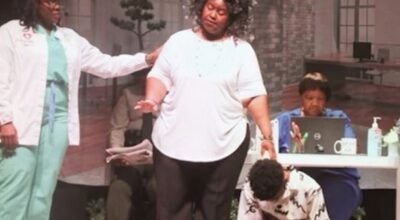Visits to dentist important for kids
Published 12:00 am Monday, August 31, 1998
By DEBORAH CORRAO / L’Observateur / August 31, 1998
School’s back in, and it’s time for those school pictures. The best way tomake sure your child has a winning smile is through good dental hygiene and regular trips to the dentist.
It’s easy for kids to develop a fear of dentistry if they get misinformation about what to expect at the dentist’s office. But with new technology anda good “chairside manner,” dentists are making those horror stories a thing of the past.
Before a child comes for his visit to Dr. Nancy Pemberton’s Luling office,he receives a letter explaining what will happen at “Dr. Nancy’s,”reassuring the child that “Dr. Nancy likes children” and telling him heroffice has a special chair, a special mirror and a special camera just for him.
Pemberton said the most important thing a parent can do to make sure the child’s visits to the dentist are painless is to let the dentist explain to the child what is going to happen during the examination.
“The best thing to do is have the parent wait in the waiting room when you’re working with a child, ” Pemberton said. “The child responds muchbetter.”During the examination, Pemberton said she uses the “Tell, Show, Do” technique.
Pemberton and dental assistant Dawn Lemoine explain each step of the examination along the way using language a young child can understand.
First, the child is escorted to a special chair for X-rays or “pictures.” The child is fitted with sunglasses to shield his eyes from the strong light used during the dental exam.
In a gentle, soothing voice, Lemoine confidently instructs the child about how the X-ray works and how to hold the film in his mouth. After the X-rays are complete, she praises the youngster for his help in taking good pictures.
Next comes the cleaning, which begins with a thorough brushing done by the dental assistant or by the doctor. The child is shown how to hold atoothbrush correctly and how to use the brush to clean even hard-to-reach places in the back of the mouth and especially around the gumline.
Then comes the flossing, which Pemberton considers vital for good dental care.
“I’m very disappointed when I ask a child if he flosses and he tells me doesn’t have any floss at his house. It’s very important for everyone tofloss their teeth every day,” she said.
The next step is the actual dental examination when the doctor looks for any cavities or other abnormalities, gives a fluoride treatment and explains what will happen at the child’s next visit. Sometimes Pembertonwill use a video to show the child how a cavity is filled or sealant applied.
Before saying goodbye, Pemberton and her dental assistant give out prizes – a Looney Tunes toothbrush, stickers and a friendship bracelet from the dentist.
Pemberton and her staff want each visit to their office to be a pleasant one for the child. She said the best advice she can give parents is to avoidtelling their children what to expect at the dentist office. She said aparent or other person may unintentionally frighten a child and cause unnecessary phobias.
Pemberton, who received the Academy of General Dentistry’s prestigious Fellowship award during ceremonies in Boston this summer, recommends that a child make his first visit to the dentist at the age of 3 unless the parent has a reason to suspect a problem. After the initial visit the childshould have a regular checkup every six months. In the meantime, thedentist stresses to parents to help their children practice good dental health habits at home. A little extra care at home can prevent problemsdown the road and make dental visits something to look forward to, she said.
Back to Top
Back to Leisure Headlines
Copyright © 1998, Wick Communications, Inc.
Internet services provided by NeoSoft.
Best viewed with 3.0 or higher




